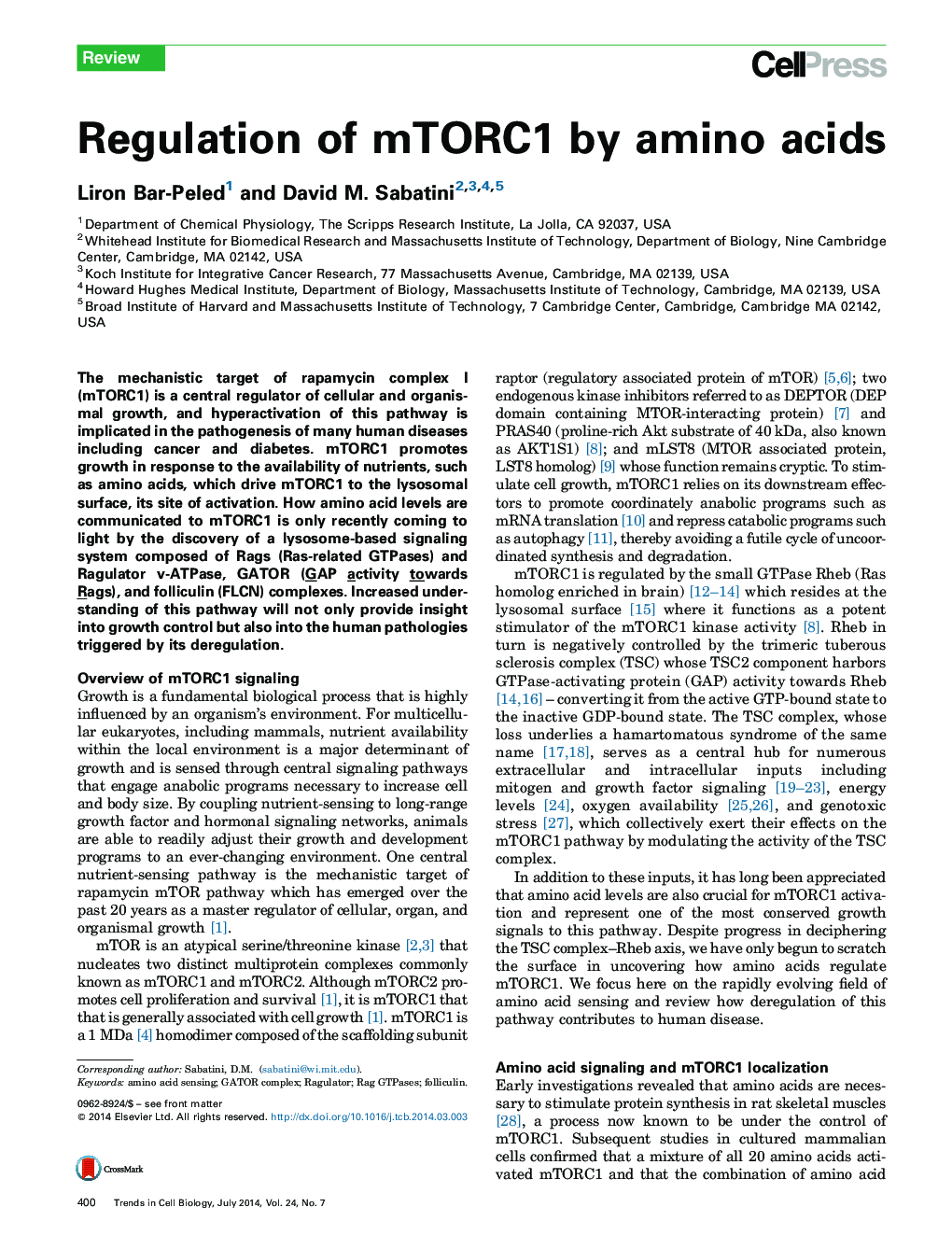| Article ID | Journal | Published Year | Pages | File Type |
|---|---|---|---|---|
| 2204578 | Trends in Cell Biology | 2014 | 7 Pages |
•Cellular amino acid levels tightly control the activity of the master growth regulator mTORC1.•The emergence of molecular details on how the mTORC1 pathway senses amino acids is an important advance in the field.•The amino acid sensing pathway is composed of several multicomponent complexes that act in concert to convey changes in amino acid levels to mTORC1.
The mechanistic target of rapamycin complex I (mTORC1) is a central regulator of cellular and organismal growth, and hyperactivation of this pathway is implicated in the pathogenesis of many human diseases including cancer and diabetes. mTORC1 promotes growth in response to the availability of nutrients, such as amino acids, which drive mTORC1 to the lysosomal surface, its site of activation. How amino acid levels are communicated to mTORC1 is only recently coming to light by the discovery of a lysosome-based signaling system composed of Rags (Ras-related GTPases) and Ragulator v-ATPase, GATOR (GAP activity towards Rags), and folliculin (FLCN) complexes. Increased understanding of this pathway will not only provide insight into growth control but also into the human pathologies triggered by its deregulation.
